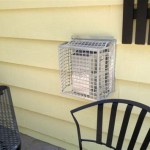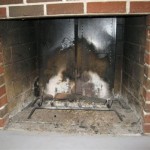Here is an article about patios and fireplaces, focusing on informative content and adhering to the given guidelines:
Patio & Fireplace: Extending Living Spaces Outdoors
The integration of a patio and fireplace transforms an outdoor area into a versatile living space, suitable for relaxation, entertainment, and extending the enjoyment of one's property beyond the confines of the interior. This combination adds aesthetic appeal, functional utility, and often, increased property value. Careful planning, design considerations, and material selection are crucial for creating a harmonious and enduring outdoor environment.
The symbiotic relationship between a patio and fireplace offers several benefits. A patio provides a defined space for outdoor activities, while a fireplace acts as a focal point, providing warmth and ambiance that encourages prolonged outdoor use, even during cooler seasons. The combination facilitates outdoor social gatherings, creating a cozy atmosphere for dining, conversation, and leisure activities. Furthermore, the aesthetic appeal of a well-designed patio and fireplace enhances the overall visual landscape of the property.
Key Point 1: Patio Design and Material Selection
The design and construction of a patio are fundamental to its overall functionality and aesthetic integration with the surrounding landscape. Several factors influence the design process, including the size and shape of the available space, the desired use of the patio, and the architectural style of the home. Considerations also extend to local climate conditions, ensuring the patio is designed to withstand weather extremes and provide adequate drainage.
Material selection is a critical aspect of patio construction, impacting both the visual appeal and the long-term durability of the surface. Common patio materials include concrete, brick, pavers, natural stone, and composite decking. Each material possesses unique characteristics, affecting its cost, installation requirements, maintenance needs, and aesthetic qualities. Concrete offers versatility in terms of design and can be stained or stamped to mimic the appearance of more expensive materials. Brick provides a classic, timeless look and offers excellent durability. Pavers are available in a wide array of shapes, sizes, and colors, allowing for customized designs. Natural stone, such as flagstone or slate, offers a rustic and organic aesthetic. Composite decking, while typically used for elevated decks, can also be employed for ground-level patios, providing a low-maintenance and durable surface.
Proper site preparation is essential for ensuring the long-term stability and integrity of the patio. This typically involves excavating the area, installing a compacted gravel base, and leveling the surface. Adequate drainage is crucial to prevent water accumulation and potential damage from freezing and thawing cycles. Depending on the chosen material, edging may be necessary to contain the patio surface and prevent shifting or erosion.
The layout of the patio should consider the intended use of the space. Areas for dining, lounging, and cooking may require different surface materials or levels. Incorporating pathways and defined zones can enhance the functionality and visual appeal of the patio. Landscaping elements, such as planters, shrubs, and trees, can be integrated to soften the edges of the patio and create a more inviting outdoor environment. Furthermore, patio furniture should be selected to complement the overall design and provide comfortable seating and dining options.
Key Point 2: Fireplace Design and Functionality
Outdoor fireplaces serve as a focal point, providing warmth, ambiance, and a gathering place for outdoor activities. The design of the fireplace should complement the architectural style of the home and the overall aesthetic of the patio. Factors such as size, shape, material, and fuel type influence the functionality and visual impact of the fireplace.
Outdoor fireplaces can be categorized into several types, including wood-burning fireplaces, gas fireplaces, and electric fireplaces. Wood-burning fireplaces offer a traditional aesthetic and produce a natural crackling sound and aroma. However, they require a constant supply of wood and generate smoke and ashes. Gas fireplaces offer convenience and ease of use, with instant ignition and adjustable flame height. They can be fueled by natural gas or propane. Electric fireplaces are the simplest to install and operate, requiring only an electrical outlet. However, they typically provide less heat than wood-burning or gas fireplaces.
Material selection is crucial for ensuring the durability and safety of the outdoor fireplace. Common materials include brick, stone, concrete, and stucco. Brick and stone offer a classic and durable aesthetic, while concrete allows for more contemporary designs. Stucco provides a smooth and seamless finish that can be painted to match the surrounding landscape. The fireplace should be constructed with fire-resistant materials and designed to withstand high temperatures and weather exposure.
Proper ventilation is essential for the safe and efficient operation of a wood-burning fireplace. A chimney or flue is necessary to exhaust smoke and gases away from the patio area. The size and height of the chimney should be calculated based on the size of the firebox and the prevailing wind conditions. Gas fireplaces also require proper ventilation to prevent the accumulation of carbon monoxide. Electric fireplaces do not require ventilation, as they do not produce any harmful emissions.
The functionality of the fireplace can be enhanced by incorporating features such as built-in seating, storage for firewood, and a cooking grate. Built-in seating provides a comfortable and convenient gathering space around the fire. Storage for firewood ensures a readily available supply of fuel for wood-burning fireplaces. A cooking grate allows the fireplace to be used for grilling and outdoor cooking. Furthermore, lighting can be integrated into the fireplace design to enhance the ambiance and provide illumination for nighttime use.
Key Point 3: Integrating Patio and Fireplace Elements
The seamless integration of the patio and fireplace is essential for creating a cohesive and functional outdoor living space. This involves careful planning and consideration of the spatial relationships between the two elements, as well as the overall design aesthetic. Factors such as traffic flow, privacy, and lighting should be addressed to ensure a comfortable and inviting outdoor environment.
The placement of the fireplace relative to the patio is a critical design consideration. The fireplace should be positioned to provide a focal point and create a sense of enclosure. It should also be located in an area that is sheltered from prevailing winds to maximize its heating efficiency. The patio should be designed to allow for easy access to the fireplace and provide ample space for seating and circulation.
Landscaping can be used to soften the edges of the patio and fireplace and create a more natural and inviting environment. Plants can be strategically placed to provide privacy, shade, and visual interest. Vines can be trained to grow on the fireplace structure, adding a touch of greenery and softening its appearance. Trees can be planted to provide shade and create a sense of enclosure.
Lighting plays a crucial role in creating the desired ambiance and extending the usability of the patio and fireplace into the evening hours. String lights, lanterns, and spotlights can be used to illuminate the patio area and create a warm and inviting atmosphere. Uplighting can be used to highlight architectural features of the fireplace and surrounding landscaping. Downlighting can be used to provide task lighting for cooking and dining areas.
Outdoor furniture should be selected to complement the overall design aesthetic and provide comfortable seating and dining options. Wicker furniture offers a classic and comfortable aesthetic, while metal furniture provides a more contemporary and durable option. Cushions and pillows can be added to provide additional comfort and personalize the space. Outdoor rugs can be used to define different zones within the patio and add a touch of warmth and texture.
The integration of other outdoor features, such as outdoor kitchens, water features, and pergolas, can further enhance the functionality and aesthetic appeal of the patio and fireplace area. Outdoor kitchens provide a convenient space for preparing and serving meals outdoors. Water features, such as fountains or ponds, can add a sense of tranquility and relaxation. Pergolas provide shade and create a defined outdoor space. Careful consideration should be given to the placement and design of these features to ensure they complement the existing patio and fireplace elements.
Maintenance is essential for preserving the beauty and functionality of the patio and fireplace. Regular cleaning and inspection can help prevent damage and extend the lifespan of the materials. Concrete patios should be sealed periodically to protect them from staining and water damage. Brick and stone patios should be cleaned regularly to remove dirt and debris. Fireplaces should be inspected annually to ensure proper ventilation and prevent creosote buildup. Outdoor furniture should be cleaned and stored properly during the off-season to protect it from the elements.
In conclusion, a well-designed patio and fireplace enhance the enjoyment and value of a property, bringing the comforts of indoor living to the outdoor environment. Careful planning and material selection are critical, alongside considering landscape integration and lighting, to achieve a cohesive and inviting space. Regular maintenance ensures the long-term beauty and functionality of this outdoor oasis.

Amantii Traditional Series 38 Inch Built In Indoor Outdoor Electric Firebox Insert Fireplace Heater Trd Fireplaces Depot

Napoleon Vector 38 Gas Fireplace Linear Rockford Chimney

38 Fireplace Includes A Steel Trim Glass Inlay 10 Piece Log Set With Remote And Cord The Center

Amantii Traditional Series 38 Inch Built In Indoor Outdoor Electric Firebox Insert Fireplace Heater Trd Fireplaces Depot

Amantii Traditional Series 38 Inch Built In Indoor Outdoor Electric Firebox Insert Fireplace Heater Trd Fireplaces Depot

Amantii Traditional Series 38 Inch Built In Indoor Outdoor Electric Firebox Insert Fireplace Heater Trd Fireplaces Depot

Supreme Astra 38cf Woodstoves Fireplace Patio

Fireplaces Wood Superior 38 Burning Wrt3538

Napoleon Vector 38 Gas Fireplace Linear Rockford Chimney

Outdoor Propane Wood Burning Fireplaces Real Flame
Related Posts








